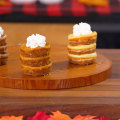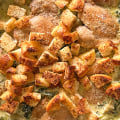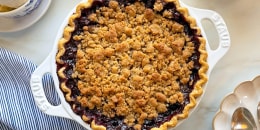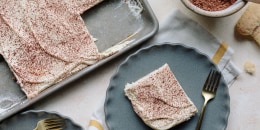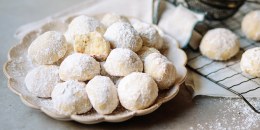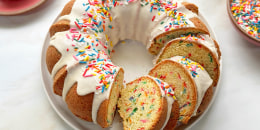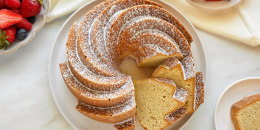Ingredients
- 1/2 cup all-purpose flour
- 1/2 teaspoon kosher salt
- 10 tablespoon unsalted butter
- 5 tablespoon ice water
Preparation
Baking Directions:
In a mixing bowl, combine the flour and the salt.
Next, cut the chilled butter into small cubes; about 1/2-inch thick.
Quickly cut the butter into the flour, using a pastry blender or your fingers.
Mix until the butter pieces are the size of large peas.
This process is very similar to that of making pie crust.
Drop the mixture onto a clean surface and make a well in the center of the flour.
Pour the ice water into the well.
Use your fingertips to combine the flour mixture and the water.
Mix just until the water is absorbed.
The dough will be ragged, but should hold together when it is squeezed.
If it seems dry, sprinkle on a few more drops of water.
Form the dough into a log shape, about 8 inches long, parallel to the edge of your work surface.
With the heel of your hand, push down and away from you all along the line of dough.
With a pastry scraper, gather up the dough and shape it back into a log, then repeat the smearing action.
This technique, known as fraisage, will form sheets of butter in the dough, creating a light crust almost like puff pastry.
With the pastry scraper, gather the dough up into a ball.
It is fine if the dough does not come together completely at this time.
Wrap the dough tightly in plastic wrap, flatten it a bit, and let it rest in the refrigerator for at least a half hour before rolling.
The dough will keep in the refrigerator for up to 2 days.
You can also freeze the dough, well wrapped; allow it to defrost for a day in the refrigerator before using it.
Roll and shape the dough according to the size of your tart pan.
Blind bake the tart shell by placing into a 375 degree oven with a shallow layer of dried pinto beans on top of the dough.
This process sets the crust without bubbles occurring between the layers of dough.
The crust is ready when it is slightly brown at the edges.



